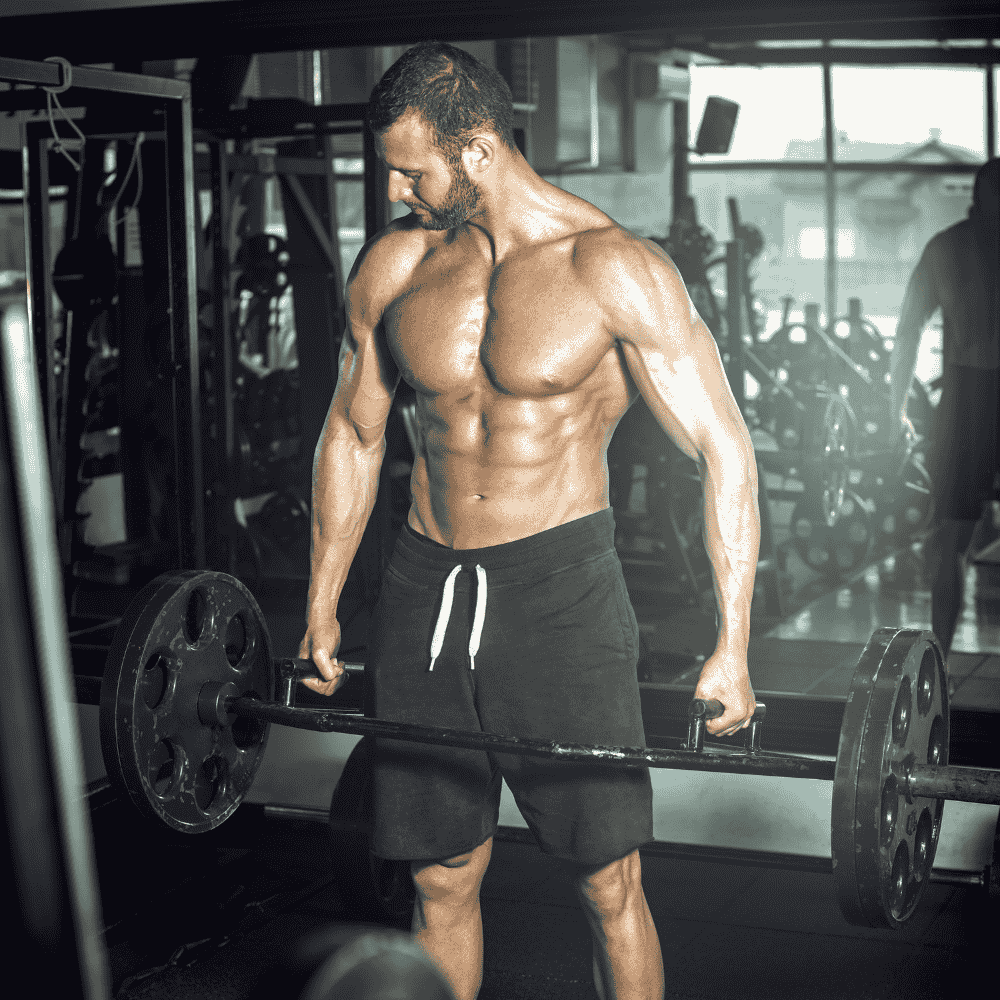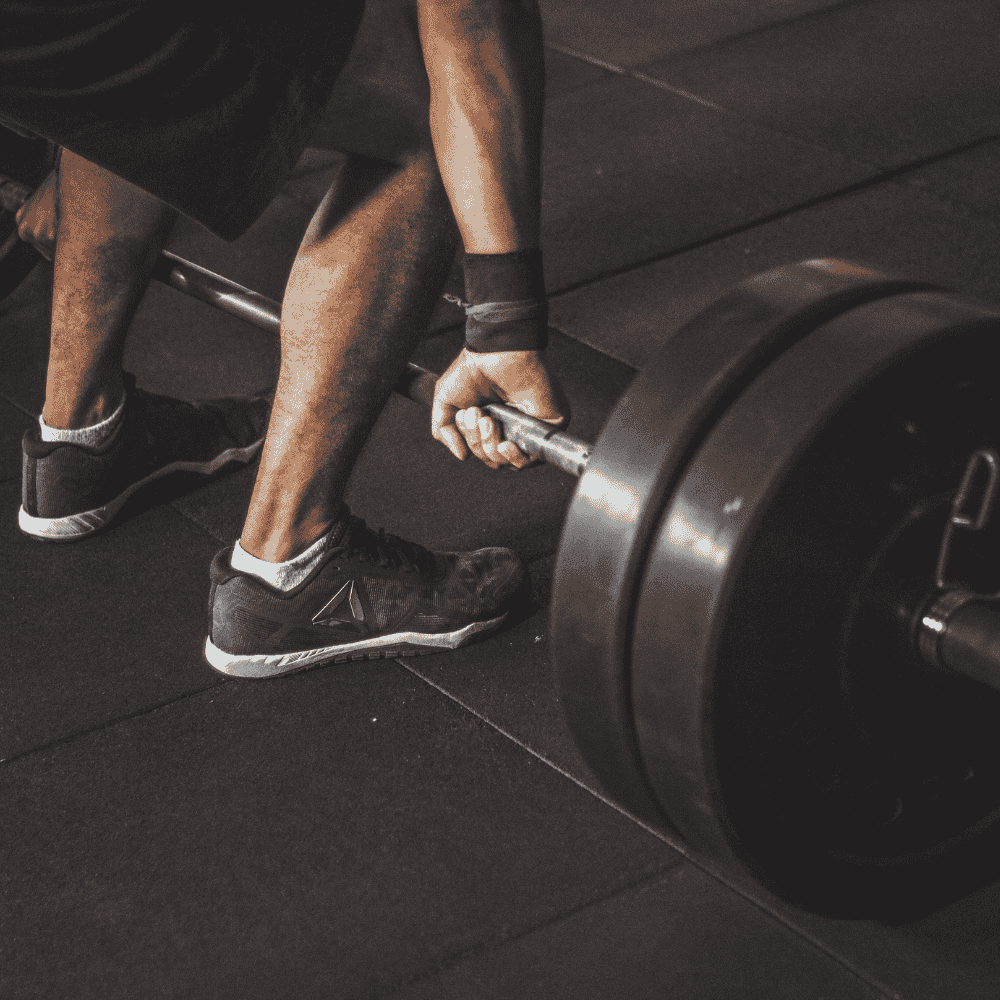If you’re looking to build a strong, sculpted back, dumbbell rows should be one of your go-to moves. They’re simple, effective, and can be done virtually anywhere — at home, in the gym, or even with a single dumbbell.
But if you’ve ever wondered how to do dumbbell rows properly or what do dumbbell rows work, this guide breaks it all down. We’ll cover technique, muscle activation, common mistakes, and expert tips to help you get the most from every rep.
What Is a Dumbbell Row?
The dumbbell row is a classic strength training exercise that targets the muscles of the upper and middle back.
It involves pulling a dumbbell towards your torso while maintaining a stable position with your core engaged.
Rows mimic the pulling motion used in many real-life movements, making them essential for developing both muscular strength and functional stability.
The great thing about dumbbell rows is their versatility — they can be performed one arm at a time (for balance and focus) or with both arms simultaneously.
What Do Dumbbell Rows Work?
So, what do dumbbell rows work exactly?
The exercise primarily targets the latissimus dorsi, the large muscles on the sides of your back. But that’s just the start. Dumbbell rows also engage:
Rhomboids: Between your shoulder blades — responsible for retracting the shoulders.
Trapezius: The upper and middle back muscles that stabilise the shoulder blades.
Rear deltoids: The back of the shoulders, aiding arm movement and posture.
Biceps: Assist in the pulling motion.
Core muscles: Help stabilise your spine during the movement.
Together, these muscles contribute to a stronger, more defined back and better posture.
If you’re serious about upper body strength, combining dumbbell rows with lat pulldowns and pull-ups creates a balanced, complete back workout.

How to Do Dumbbell Rows Properly (Step-by-Step Guide)
Follow these steps to master your form and make every rep count.
1. Set Up Your Position
Grab a flat bench and a dumbbell.
Place your right knee and right hand on the bench for support.
Keep your left foot planted firmly on the floor, slightly behind you.
Hold the dumbbell in your left hand with your arm extended straight down.
2. Engage Your Core
Keep your spine neutral, your chest lifted, and your gaze slightly ahead.
Avoid rounding your back — your torso should be parallel to the floor.
3. Pull the Dumbbell
Exhale as you pull the dumbbell up towards your hip.
Lead with your elbow, keeping it close to your body.
Focus on squeezing your shoulder blade at the top of the movement.
4. Lower the Weight Slowly
Inhale as you lower the dumbbell back to the starting position under control.
Do not let it drop or swing.
5. Repeat
Complete 8–12 reps per side for 3–4 sets, depending on your goal.
Then switch sides and repeat with your right arm.
Common Dumbbell Row Mistakes (and How to Fix Them)
Even though the exercise looks straightforward, small mistakes can reduce effectiveness or even cause injury.
Here’s what to avoid:
1. Rounding the Back
This is the most common error. Rounding puts pressure on your lower back and reduces lat engagement.
Fix: Keep your back flat and your core tight throughout.
2. Using Momentum
Swinging the dumbbell instead of lifting it with control takes tension off your muscles.
Fix: Move slowly and deliberately — think “pull and squeeze” rather than “yank and drop.”
3. Pulling Too High
If you pull the dumbbell up toward your shoulder, you’ll overuse your biceps instead of your lats.
Fix: Pull toward your hip, not your shoulder, to keep the focus on your back.
4. Shrugging Your Shoulders
This activates your traps too much and limits lat activation.
Fix: Keep your shoulders down and relaxed, focusing on driving your elbow back.
5. Not Controlling the Lowering Phase
Letting the dumbbell fall wastes half the movement.
Fix: Lower the weight with control, maintaining tension through your lats.
Dumbbell Row Variations to Try
To keep your training effective and exciting, experiment with different dumbbell row variations:
Single-Arm Dumbbell Row: Classic version for isolation and balance.
Two-Arm Dumbbell Row: Increases overall strength and efficiency.
Incline Dumbbell Row: Performed chest-down on an incline bench to reduce strain on your lower back.
Kroc Row: A heavier, higher-rep version used to build grip strength and endurance.
Renegade Row: Combines core stability and back strength by performing rows in a plank position.
Each variation targets slightly different muscle fibres and adds variety to your training.

How Heavy Should You Go?
The ideal dumbbell weight depends on your experience level. Beginners should start light (6–10 kg per dumbbell) to learn form before increasing resistance.
As your strength improves, progress gradually. For muscle building, aim for 8–12 reps per set with a weight that feels challenging but controllable.
Remember: technique always comes first. Using too much weight and sacrificing form won’t lead to progress — it’ll just lead to poor posture or strain.
Benefits of Dumbbell Rows
Dumbbell rows offer several powerful benefits:
Build strength and muscle definition in your back and arms.
Improve posture by strengthening stabilising muscles.
Enhance pulling power for other exercises (like deadlifts and pull-ups).
Engage core muscles for better balance and stability.
Offer versatility — ideal for home workouts and gym training alike.
For those training at home, all you need is a bench and adjustable dumbbells — both available from KEFL Fitness.
Dumbbell Rows vs Barbell Rows: What’s the Difference?
Both movements are great for your back, but they have distinct advantages.
-
Dumbbell Rows:
Allow a greater range of motion.
Reduce muscle imbalances (each side works independently).
Easier on the lower back.
-
Barbell Rows:
Better for lifting heavier loads.
Require more core and lower back stability.
For most people, alternating between the two offers the best balance of strength and muscle development.
Pro Tips for Better Results
To maximise your dumbbell rows:
Keep your core braced — imagine someone’s about to poke your stomach.
Don’t twist your torso to lift the dumbbell higher.
Squeeze your lats at the top of every rep.
Include rows 2–3 times per week in your training routine.
Pair with other back exercises like lat pulldowns, face pulls, and deadlifts for full development.

Build a Stronger Back with KEFL Fitness
If you’re training at home, quality equipment makes all the difference.
KEFL Fitness offers a full range of adjustable dumbbells, flat benches, and multi-gyms designed to help you master dumbbell rows safely and effectively.
Combine proper form with progressive overload, and you’ll soon notice a stronger, more powerful back — ready for any challenge.
Final Thoughts
Learning how to do dumbbell rows properly is one of the best investments you can make in your strength training journey.
When performed with good form, they target all the key muscles in your back, improve posture, and balance out your upper body strength.
Avoid the common mistakes, stay consistent, and focus on control.
Over time, you’ll not only see visible definition but also feel stronger in every other pulling movement you perform.









